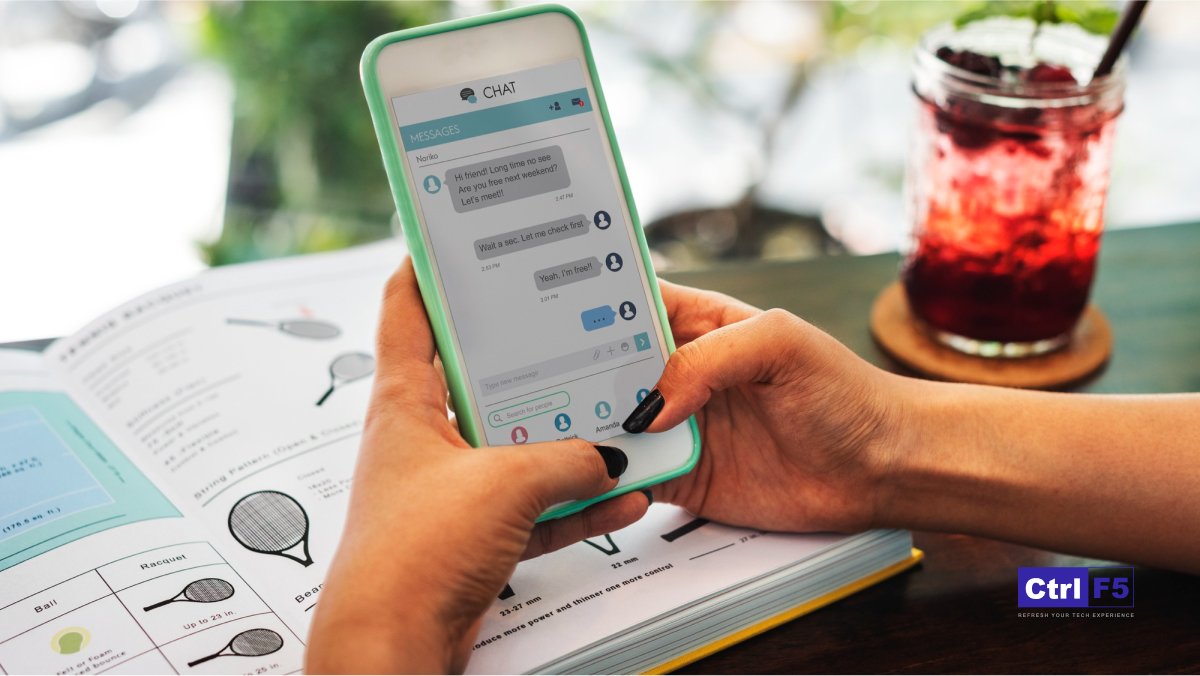How to Design an Awesome App User Interface: Full Guide
- Anurag Pandey
- Last updated on April 17, 2025
- Android, How To Guide, iOS, Mobile Apps
- 10 minutes read
Table of Contents
Toggle“A user’s first impression of your website can make or break their decision to explore your site further.”
Creating excellent interfaces that users will love requires effort, but it is rewarding. UI designers excel in both the visual and theoretical parts of interface design.
Mobile apps have become an important component of our daily lives in the digital age. It’s no secret that today’s clients prefer quick and straightforward solutions to their problems. That’s why UI is so important. From social networking sites to banking apps, we use these tools to communicate with others, stay organized, and access information while on the go. With so many use cases and innovation potential, it’s no surprise that the field of mobile app design has expanded so quickly.
According to the study by forrester, a decent user interface can increase website conversion rates by up to 200%. It is the entryway to your visual business and the driving force behind user engagement. User interfaces are the digital touchpoints that connect businesses and users. They serve as the entryway to Internet products and services. A user interface provides access to everything we read, watch, and buy online. This is why creating user interfaces is a critical design effort.
Your Android app’s user interface (UI) is more than a visual depiction. It is critical to attract users by providing a consistent and intuitive experience. A well-designed UI enhances usability, stimulates user participation, and creates a memorable experience. In this writing lesson, we will walk you through the process of designing a user interface for your Android mobile app, covering key ideas, tools, and in-depth insights tips to help you create an outstanding user interface that separates your app from the competition.
The ControlF5 team has prepared an instructional guide to help you create a visually appealing app design.
So, read ahead!
How to Design an Awesome App User Interface: Top 7 Principles
Designing a mobile application is both an art and a science. It’s not only about how visually appealing the program is; it’s also about how consumers interact with it. To develop a good mobile app, keep these seven important UI elements in mind:

1. Simplicity is key
Truly, UI designers can expect to have the project definition fed to them in documentation and presentations. What matters is that they have a crystal clear idea of what the digital solution will be like, what it does, and who will use it. This kind of knowledge is just as important to UI designers as it is to UXers.
In mobile app design, less is more. A Jumbled design not only degrades the user experience, but it can also overwhelm and confuse them. The most memorable and effective mobile designs emphasize minimalism, highlighting only the most important aspects and functionalities. Every design decision should serve a clear goal. By removing clutter and embracing simplicity, you may build a more focused and user-friendly app experience.
2. Consistency matters
Consistency is the foundation of confidence in design. When users meet consistent UI elements, such as typefaces, colors, or button designs, they quickly become normal to the mobile app’s surroundings, making navigation and job completion easier. This consistency should not only be exterior; it should also apply to interactions, gestures, and feedback mechanisms. Establishing a design system or style guide early on can be really beneficial. It serves as a blueprint, ensuring that the design is consistent across several screens.
3. Prioritise readability
Mobile Apps connect with users, usually via text. This emphasizes the importance of typography, font size, and contrast. The textual content should stand out from the background so that readers do not have to strain or strive to absorb information. Given their size, mobile devices provide unique readability problems, making it more important to choose legible fonts and sizes. A mobile app’s design may be visually appealing, but if the content is difficult to understand, you will struggle to keep your users satisfied.
4. Feedback is crucial
Imagine you press a button and nothing occurs. Without feedback, users are kept in the dark, unsure whether their actions were processed. Every interaction with the mobile app, whether swiped or tapped, should result in a response. This could take the shape of a modest animation, color shift, or tactile feedback. These micro-interactions comfort consumers that their activities were recorded while also adding individuality to the software. Feedback is the heartbeat of effective UI/UX design, guiding us to understand user needs and preferences, and ensuring a seamless and intuitive experience.
5. Design for thumbs
Because mobile devices are largely portable, a large portion of user interactions are thumb-driven. This physiological fact should inform design considerations. Primary actions and essential elements should be easily accessible by the thumb, allowing users to explore and engage with the app pleasantly. The concept of the “thumb zone,” which refers to the most accessible sections of a mobile screen for the thumb, should inform the positioning of essential UI elements. Designers can improve usability and create a more natural user experience by accommodating thumb-driven navigation.
6. Strategic use of push notifications
Push notifications can be a two-edged sword in mobile app design. When used correctly, they keep consumers interested and informed. However, if overdone or improperly timed, they can easily irritate users and cause app uninstalls. Try to strike a balance here. A well-crafted push notification approach considers the user’s preferences, time zones, and interaction habits. Notifications should be useful, whether they are an update or a reminder. Allowing consumers to personalize their notification options can improve their overall experience (which is ultimately the purpose).
7. Embrace personalization
In the age of data-driven experiences, personalization has evolved as a key component of user-centric design. Users have learned to expect apps that cater to their specific interests, habits, and needs. An app that remembers a user’s preferences, suggests content based on previous activity or even welcomes the user by name can make the experience feel even more personalized. Personalization may dramatically increase user engagement and pleasure, whether through AI-driven content recommendations using the best Shopify product recommendation apps, tailored user interfaces, or adaptable features.

Top Useful Tools for Mobile App Design
Indeed, UI design can also deal with fresher types of interfaces, like voice-based interfaces or virtual reality interfaces. There are many leading website design agencies that use such tools that expedite your workflow, to bring your mobile app design ideas to life.
1. Figma: Figma’s browser-based interface makes it a popular choice for mobile app design. It provides pixel-perfect precision, ensuring your designs look great on mobile displays of all sizes. Furthermore, Figma’s rich component library simplifies mobile-specific UI features, accelerating the design process.
2. Framer: As we previously discussed, mobile app interfaces are more than just appearance; they are also about feel and engagement. This is where Framer shines, allowing designers to create elaborate mobile-native interactions. With its intuitive drag-and-drop interface, creating mobile app animations and interactions becomes a tactile experience, replicating users’ hands-on engagements with mobile apps. Framer’s versatility also ensures that designs look and work appropriately across a variety of mobile devices.
3. InVision: InVision’s success in the mobile app space resides in its ability to generate rich, interactive prototypes from static designs. It mimics the mobile user experience, offering designers and stakeholders an accurate sense of the app’s flow and functionality before construction. Furthermore, its mobile mirroring capability allows prototypes to be viewed immediately on devices, ensuring an accurate portrayal of the finished product.
4. Adobe XD: XD, a versatile tool from the Adobe family, is optimized for mobile app design. Its repeat grid functionality is ideal for creating consistent UI elements seen on mobile devices. XD’s auto-animate feature also assures smooth transitions by imitating the natural mobile animations that users expect from mobile apps.
5. Sketch: Sketch, known for its clean UI and precision, is a popular tool for designing mobile apps. Sketch has a large number of plugins to choose from, many of which are built specifically for mobile design. Furthermore, with its artboard presets for a variety of mobile devices, creating a fresh design for certain phone models is simple.
Mobile App Design Tips for the Best User Interface
Your mobile app design choices will have a big impact on the user experience. So, when going through the How to Design an Awesome App User Interface and its process, keep UX/UI design in mind at all times. Mistakes in design will degrade the user experience and cause fewer people to utilize the mobile app.
With all of this in mind, here are some more tips to consider when creating the best UI mobile app:
- Display and Screen Orientation
Your app must be compatible with several devices and operating systems. Everything from the iPhone SE to the iPhone 13, Samsung Galaxy S21, and Samsung Galaxy Z Fold3—everything. These all have varying screen sizes.
Aside from phones, you’ll need to consider how your app looks on tablets.
That is not all. What happens when a user switches their device from portrait to landscape mode? How will your application respond?
All of this must be taken into account during the design process.
- Responsiveness
All of your design decisions must make the app very responsive. When users touch buttons, scroll, or navigate between screens, the app should respond immediately.
Ensure your UI/UX design adapts seamlessly to various screen sizes, offering a consistent and user-friendly experience on both smartphones and tablets. If there is a delay or fallback between activities, the mobile app design is not responsive.
Users will rapidly lose interest in an app that is unresponsive to their touch and actions. This is closely related to your design aspects.
- Prioritize Readability
Choose legible fonts and appropriate font sizes to enhance readability, especially on smaller screens. Pay attention to the contrast between text and background to ensure text is easily readable in different lighting conditions.
- Eliminate Distractions
This builds on the last point we discussed. Distractions not only make CTAs difficult to see, but they also degrade the user experience.
Remove any unnecessary design components that do not improve the program, its operations, or the user experience.
Does having a live waterfall background make your app appear cool? Maybe, but it’s a distraction that doesn’t help your mobile app function.

Final thoughts on How to Design an Awesome App User Interface
Prototypes give life to your original idea. You are not required to use all of these tools; only those that you believe your team requires to take your design process to the next level. Mobile app design is a continually evolving mission. There will always be areas that require labor. Designing a mobile app that truly stands out from the crowd and leaves a lasting impact requires a deep and complete understanding of UI principles, user behavior patterns, and the latest growth in mobile technology.
ControlF5 is the best web designing and UX/UI mobile app development company in India. For designing your web UI with a deep knowledge of user experience design and psychology. Following industry best practices guarantees that your user interfaces perform optimally. When developing a user interface, it is best to use real-time code-generating tools to convert your mobile app design into moveable code.
By sticking to these criteria and constantly learning from real-world examples of great mobile applications, you will be well-prepared to design visually appealing, intuitive, and highly engaging mobile apps that captivate and delight your target audience.
If you have any questions, don’t hesitate to contact us and we’ll be here to help you to create your new UI mobile app design.
Anurag Pandey
Recent Posts
Categories
Hire Developers
About us
Popular Posts
Tags
Related Articles
How to Create a High-Converting E-Commerce Store: 10-Step Guide
Just planning and building an ecommerce store is not enough. Creating a high-converting e-commerce store is equally important because every business owner’s ultimate goal is to grow their online business and drive consistent sales.
How to Build a High-Impact Grocery Mobile App Like Instamart
In today’s fast-paced digital era, every user now depends on mobile apps and they order directly from their mobile without wasting time by going to shop. Just like clothes, electronics, and more can be online as same grocery items can also be ordered with just a few taps.
How to Plan Your E-Commerce Website: A Step-by-Step Guide
Launching an e-commerce website is a crucial step toward expanding your online business and reaching a wider audience
In today’s digital world, having a well-designed and functional website is essential for success. However, creating a great ecommerce website design requires proper planning and execution.
Sign up for our Newsletter












